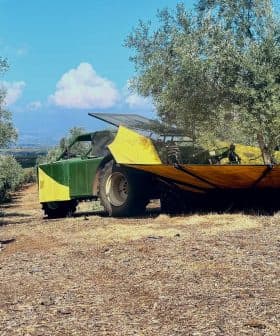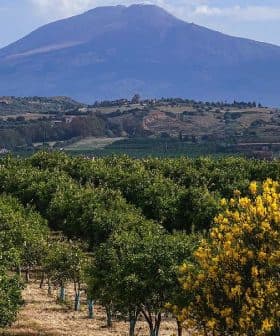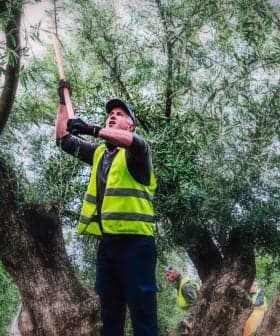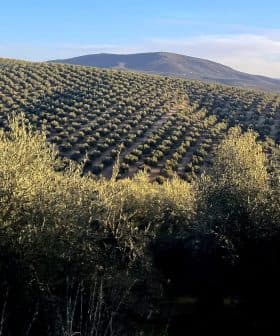Latest Forecast Still Gloomy for Spanish Olive Oil Harvest
Andalusia’s olive oil production is estimated to be less than 514,000 tons this season, with Jaén expected to experience a nearly 70 percent decrease in production. Despite the lower production, the Andalusian government believes the harvest will be enough to meet demand, while agricultural unions fear a potential shortfall of about 100,000 tons.
Jaén President Francisco Reyes (second from left) and Minister of Agriculture, Fisheries and Environment, Luis Planas (center) at the presentation of the first olive production of the season.
New and more thorough estimates have pegged Andalusia’s olive oil production at less than 514,000 tons this season — about half the average of the last five harvests — and Spain’s total production at just over 625,000 tons.
According to the forecast from the Andalusian regional government, the worst-hit of its provinces will be world olive oil capital Jaén, which can expect just 170,000 tons, a nearly 70 percent plunge on last year.
Globally, olive oil output is tipped to total 2.75 million tons, which would be down a fifth on the last season.
No-one seems to be disputing the figures but there is disagreement about the consequences.
Andalusia’s Minister of Agriculture, Fisheries and Environment, Luis Planas — who released the estimates yesterday — said that combined with carry-over olive oil stocks which stood at about 700,000 tons at the end of September, the coming harvest would be enough to “supply markets and meet demand.”
But agricultural unions COAG and UPA fear that won’t be the case. Agustín Rodríguez, UPA general secretary for Andalusia, said that with demand at about 1.4 million tons, a shortfall of about 100,000 tons is likely.
In a market currently marked by very low levels of wholesale sales and continuing high prices, he urged producers to be patient and not cave in on price. Poolred’s ex-mill weighted average price for olive oil is currently €2432/t.
Official prediction based on local feedback
The forecasts were the first in-depth official evaluation of Spain’s likely olive oil and table olive output in 2012/2013 and were based on information from sources including the Plant Health Alert and Information Network (RAIF), phone calls to mills, land and production data from regional panels, and statistics from regional authorities.
The forecast says that the start of the season was characterized by plantations weakened after three seasons of record production, and unfavorable weather including low rainfall in winter and and severe frosts in February.
The lack of crop vitality and vegetative development and the drought and high temperatures in turn caused a significant reduction in flowering, poor fruit set, and an average of olives per shoot much lower than in other seasons.
“There aren’t many olives on the trees, but the harvest could be improved by rain in the coming months” it says.










